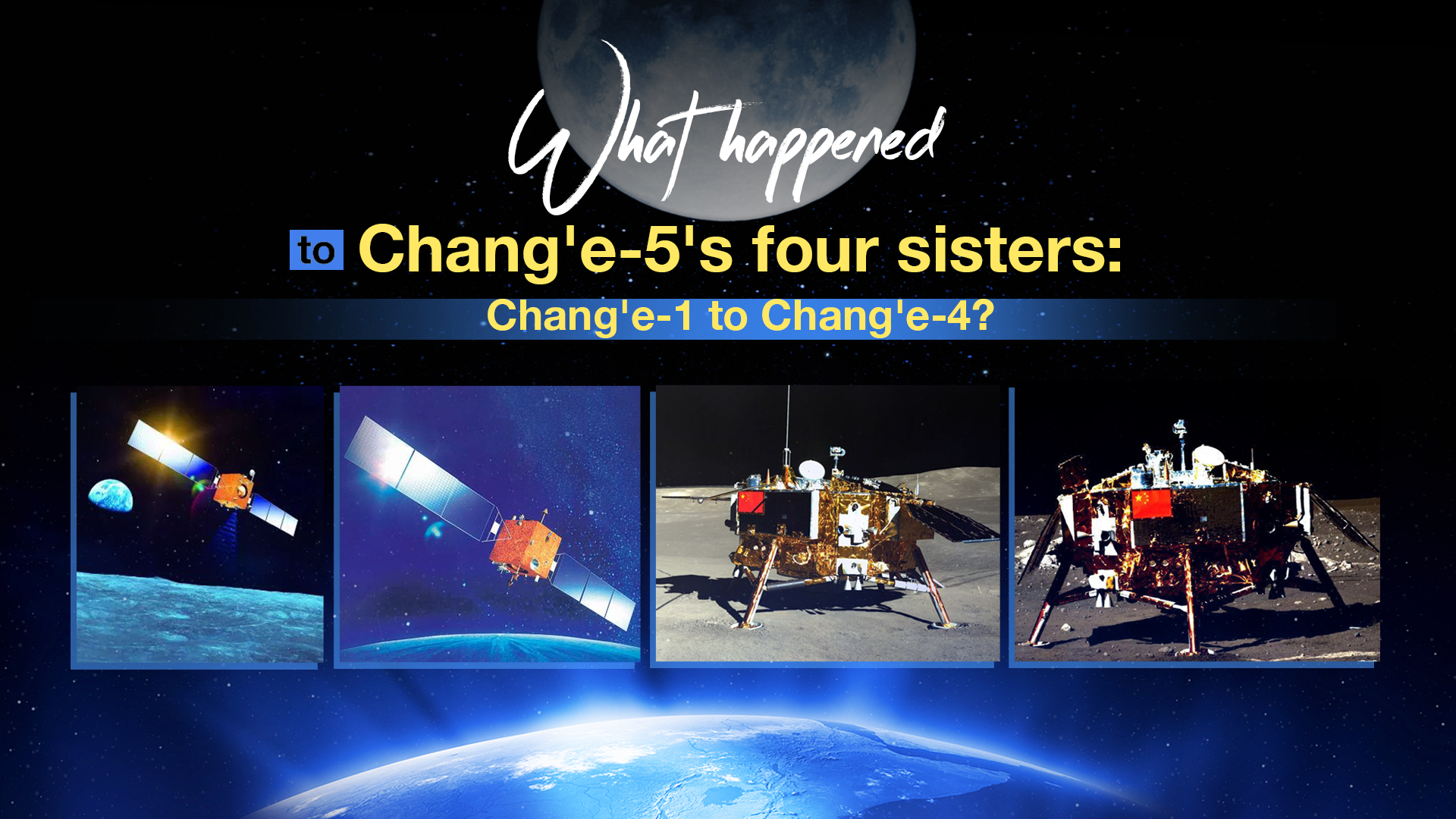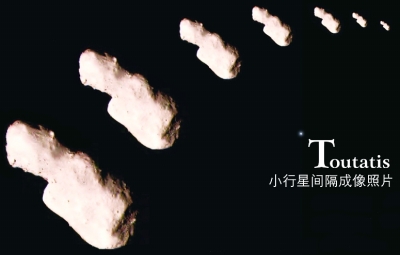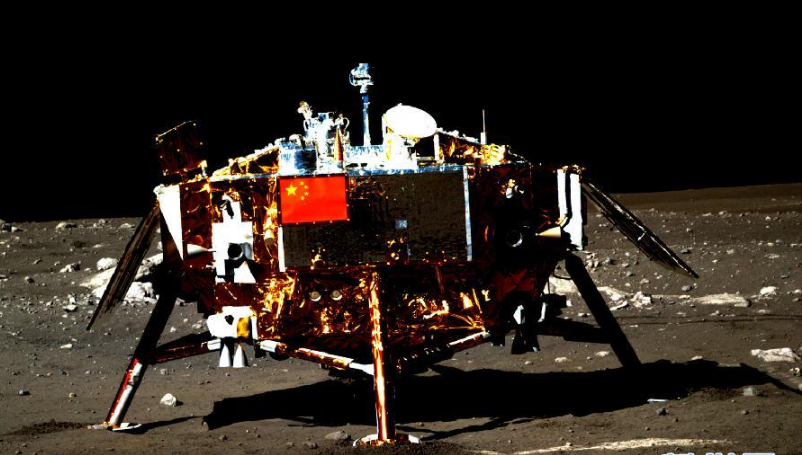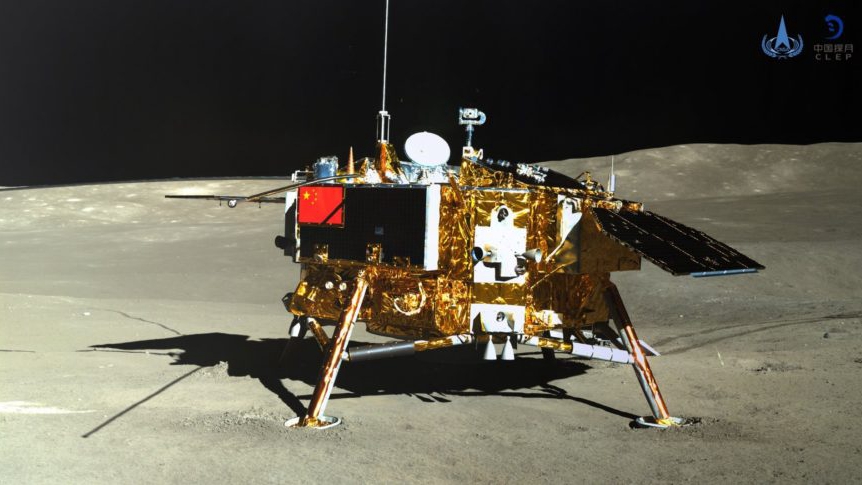
China's Chang'e-5 probe, which is on its way back to Earth with lunar samples, is expected to land on the grasslands of north China's Inner Mongolia in two to three days.
As its name suggests, Chang'e-5 is the country's fifth lunar mission. Unlike its predecessors, this one is the first moon sample return mission.
In order to successfully deliver the precious cargo from the moon to Earth, the four vehicles of the Chang'e-5 probe – lander, ascender, orbiter, and returner- have gone through several separations during the long, complicated round trip. Eventually, only the returner will carry the lunar rock and soil back to Earth.
Before Chang'e-5, China launched four lunar missions from 2007 to 2019. They are all part of the country's lunar exploration program, known as the Chang'e Project after the Chinese moon goddess.
Read more: How far has China gone in its lunar exploration plan?
China's Chang'e-1 to Chang'e-4 lunar probes didn't have returners to get them back to Earth. So what happened to them after they completed their missions? Are they still in service?
Chang'e-1
Chang'e-1, China's first lunar probe, was launched in October 2007. It was a lunar-orbiting spacecraft that worked 200 km above the moon.
It flew for 494 days before its mission came to an end on March 1, 2009, when it descended from the lunar orbit and executed a controlled crash onto a designated location on the surface of the moon. That was the first imprint that China left on the moon.
Intentionally crashing probes onto the moon is one of the most common ways adopted by different countries to dispose of spacecraft that have concluded their missions.
Chang'e-2
Chang'e-2 was sent into the lunar orbit in October 2010. It conducted research from an orbit of 100 km above the moon in preparation for the later soft landing of its successors.
After completing its major goal, the probe left the lunar orbit for the Earth–Sun L2 Lagrangian point in August 2011 and started to transmit data from its new position in September 2011.
In April 2012, Chang'e-2 left the L2 point as it was dispatched on an extended mission to an asteroid named Toutatis. The probe flew by the asteroid in December 2012 and took photos of it.

A photo of the asteroid Toutatis taken by Chang'e-2. /Xinhua
A photo of the asteroid Toutatis taken by Chang'e-2. /Xinhua
After that, Chang'e-2 began its deep-space journey. It has become a satellite of the solar system, flying around the sun along an elliptical orbit.
The probe has been traveling for more than 10 years. It is expected to return closer to Earth sometime around 2029 to a position about 8 million kilometers from its home planet.

The lander of China's Chang'e-3 probe on the moon. /Xinhua
The lander of China's Chang'e-3 probe on the moon. /Xinhua
Launched in December 2013, Chang'e-3 was China's first probe to make a soft landing on the moon.
The probe, including a lander and China's first lunar rover called Yutu (Jade Rabbit), touched down at Mare Imbrium (Latin for "Sea of Rains") on the near side of the moon.
The landing site has been named "Guang Han Gong," which refers to the "Moon Palace" where Chang'e and Yutu lived according to an ancient Chinese fairy tale.
The lander is still operational, seven years after its landing, which makes it the longest-working spacecraft on the moon. The Yutu rover ceased operations four years ago.

The lander of China's Chang'e-4 probe on the moon./CNSA
The lander of China's Chang'e-4 probe on the moon./CNSA
Chang'e-4, also consisting of a lander and a rover named Yutu-2, was launched in January 2019. It achieved humanity's first soft landing on the far side of the moon.
Its landing site is a crater called Von Kármán in the South Pole-Aitken Basin, which has been named "Statio Tianhe" in February 2019 under the approval of the International Astronomical Union (IAU). "Tianhe" means Milky Way in Chinese and "Statio" is Latin for base.
The lander and the rover work during lunar days and switch to dormant mode during lunar nights due to the lack of solar power. A lunar day is equal to 14 days on Earth, and a lunar night is the same length.
So far, Chang'e-4 probe has survived over 700 Earth days on the moon. Yutu-2 rover has traveled 589.6 meters on the lunar surface as of November 22, which far exceeds its three-month design lifespan, becoming the longest-working lunar rover on the moon.
Read more: What has China's Chang'e-4 lunar probe accomplished so far?

